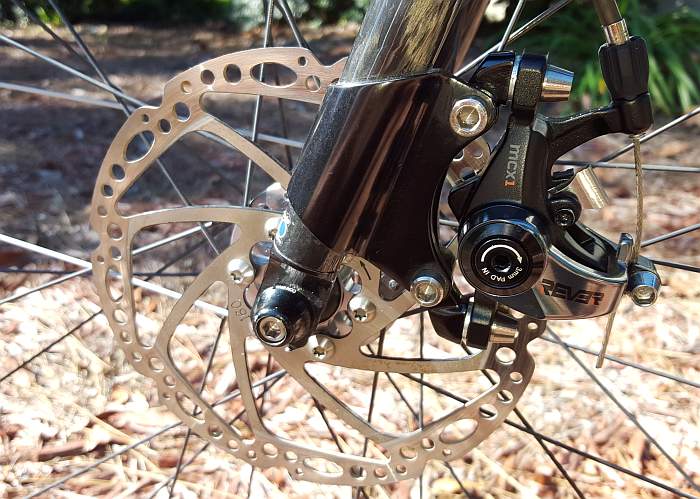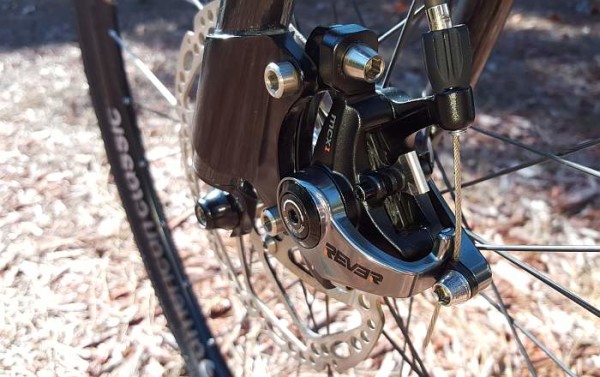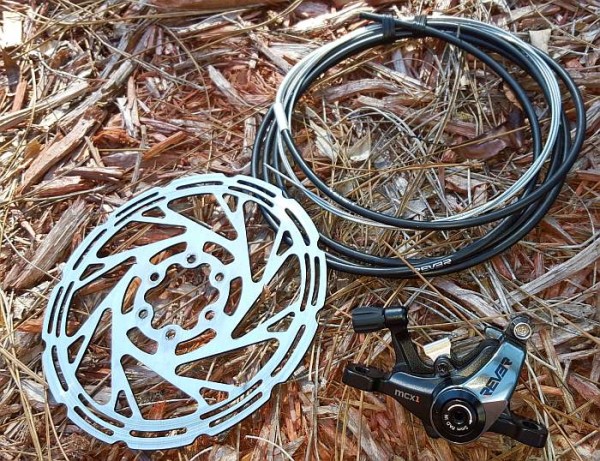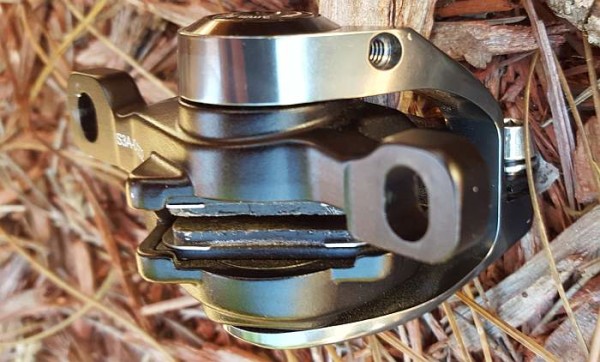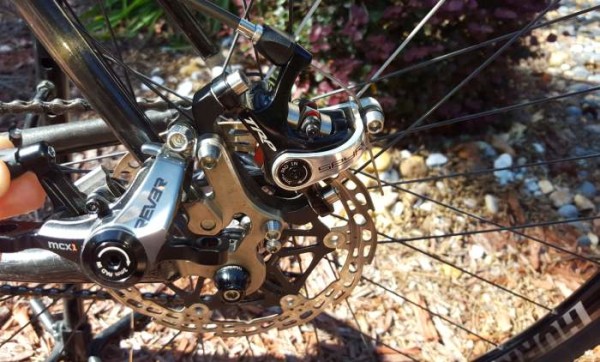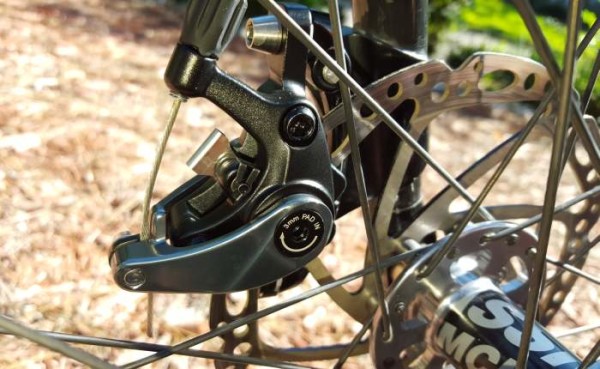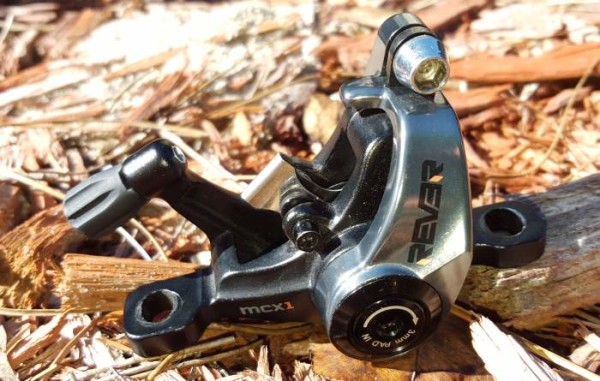Disc brake systems for cyclocross and gravel bikes are becoming the norm de rigeur these days. While two of the big three component manufacturers offer full hydraulic brake systems for road levers, there are those who don’t need or want the added expense of such a system, or prefer the simplicity of a cable-operated mechanical disc brake system.
Single actuation mechanical brakes have been around for a while, where one pad moves and the other remains fixed. More recently, two mechanical systems offering movement in both pads have come to the fore, including the one we’ve reviewed – the Rever MCX1 dual piston mechanical brake system. Be sure to check out our first impressions including system weights and other highlights. Then ride past the break for the long term review…
As alluded to in Tyler’s first impressions of the system, the packaging comes loaded with cables, housings, bolts, adapters and disc rotors – all you need is a set of decent cable cutters and a couple of allen keys.
Installation
The Rever MCX1 brakes were installed onto my trusty disc-brake gravel rig, equipped with Shimano’s Ultegra Di2 drivetrain and mechanical brake levers. Previously, my rig was fitted with TRP’s Spyre brakes – the other dual piston mechanical disc brake system on the market – so I was keen to see how the Rever MCX1’s compared.
Thankfully, I had compressionless brake housings already installed which saved me from trashing a perfectly good set of housings. I did however install new brake cables as supplied by Rever.
Unlike Tyler in his initial impressions, I had no issues with wheelset spokes striking the MCX1 caliper themselves, but this may be dependent on your chosen wheelset. For the record, I was rolling with American Classic’s venerable Hurricane disc brake wheelset.
Installation was fairly straight forward, including the time required to position the calipers so there was no pad to rotor contact when the brakes weren’t actuated. Out of the box, the calipers are configured with the on-board pad adjusters dialed all the way out.
Unfortunately, I ran into the same issue Tyler mentioned in his first impressions of the system; an annoying amount of “free stroke” or “hyperspace”, as I prefer to call it. Loosely defined, this is the vague 5 – 7mm of travel in a brake lever before pads begin to actuate and move towards the brake rotor. Alternatively, this “free stroke” is akin to improper setup with a mechanical road caliper rim brake if you’ve not pulled all of the slack from the cable.
Ordinarily this would be a simple fix – pull the cable taut with a third-hand tool or other creative method, and lock down the fixing bolt onto the cable. I took care of that but some “free stroke” still persisted.
Thankfully, our earlier article made reference to the not-mentioned-in-the-manual spring tension bolt that resides on the back side of the caliper lever arm. Turning this bolt in the appropriate direction removed all slack from the cable, and gave me the snappy brake lever feeling I was looking for.
Performance
To test the Rever MCX1 brakes appropriately, I rode them with a combination of rotors including Rever, Hope Floating and TRP. Additionally, I swapped pads several times alternating between the stock semi-metallic pads to organic pads. Rever is on the ball by making their pads compatible with Shimano’s G-Type (XT / XTR).
If it weren’t for one issue, it was difficult to determine a marked difference in braking performance when comparing the Rever MCX1 directly to the TRP Spyre brake. The issue? No matter how I the adjusted pads in proximity to the brake rotor – both pads simultaneously using the barrel adjuster on the MCX1 caliper itself, or alignment of each individual pad using the 3mm allen key adjustment – there was more lever stroke than I liked to achieve the same level of braking power on the MCX1 brake versus the TRP Spyre – in other words, more power seemed to come towards the end of the brake lever stroke with the MCX1.
Some cyclists may like their brake levers to have a reasonable amount of travel before they feel the braking power really come into effect, disc or rim brake. However, I prefer my brakes to feel tight, so I can gently dab them with a minimum of lever movement, scrubbing off microscopic amounts of speed. Consequently, my preference is for mechanical disc brakes to be adjusted so the pads are as close as possible to the rotors but without touching. The Revers were also adjusted in this manner.
To further confirm I wasn’t going around the bend, I substituted the Rever MCX1 brake on the rear of my test bike for a TRP Spyre brake.
This confirmed my suspicions. Same brake lever, same rotors, same pads, but the Rever MCX1 required more lever travel to reach the equivalent perceived power of the TRP Spyre brake. In no way did I bottom out the brake lever with the Rever brake, but the overall feel wasn’t to my liking.
TRP’s Spyre mechanical brake satisfies my personal demands – but the Rever MCX1 brake may suit yours. Feel issue aside, the MCX1’s provided a good amount of power, modulation and control, on par with the TRP Spyre brake, albeit with more lever throw to achieve it.
Compared to equivalent hydraulic brake systems, MCX1’s are not as powerful, but that comes with the territory. Mechanical disc brakes work in all but the most disgusting of muddy conditions (envisage physical jamming when a caliper is continually caked in mud – as happened to me at 2015 Southern Cross), don’t require fluid or bleeding procedures, or worries about air bubbles in the brake line.
As expected, swapping the brake pads from metallic to organic made a nice difference in initial brake power, but at the expense of a shorter life, particularly in nasty conditions.
Overall, Rever’s MCX1 dual piston mechanical brake is a good buy, provided you’re the type of cyclist who likes their brakes to bring on the power further into the brake lever stroke. The Rever MCX1’s are well priced at $US 149.00 MSRP each, which includes a plethora of hardware to get them working on your bike. Additionally, they compare favorably in weight alongside TRP’s Spyre brake.
Photos and article by Gravel Cyclist.
Jayson O’Mahoney is the Gravel Cyclist: A website about the Gravel Cycling Experience.
